Arora, N., Ahmad, T., Rajagopal, R. and Bhatnagar, R. K. 2003. A constitutively expressed 36 kDa exochitinase from
Bacillus thuringiensis HD-1.
Biochem. Biophys. Res. Commun. 307:620-625.


Back, C.-G., Hwang, S.-K., Park, M. J., Kwon, Y.-S., Jung, H.-Y. and Park, J.-H. 2017. Phylogenetic analysis of downy mildew caused by Peronospora destructor and a method of detection by PCR. Korean J. Mycol. 45:386-393 (in Korean).
Caulier, S., Gillis, A., Colau, G., Licciardi, F., Liépin, M., Desoignies, N., Modrie, P., Legrève, A., Mahillon, J. and Bragard, C. 2018. Versatile antagonistic activities of soil-borne
Bacillus spp. and
Pseudomonas spp. against
Phytophthora infestans and other potato pathogens.
Front. Microbiol. 9:143.



Cutting, S. M. 2011.
Bacillus probiotics.
Food Microbiol. 28:214-220.


de Almeida Melo, A. L., Soccol, V. T. and Soccol, C. R. 2016.
Bacillus thuringiensis: mechanism of action, resistance, and new applications: a review.
Crit. Rev. Biotechnol. 36:317-326.


Degani, O., Dimant, E., Gordani, A., Graph, S. and Margalit, E. 2022. Prevention and control of
Fusarium spp., the causal agents of onion (
Allium cepa) basal rot.
Horticulturae 8:1071.

Djenane, Z., Nateche, F., Amziane, M., Gomis-Cebolla, J., El-Aichar, F., Khorf, H. and Ferré, J. 2017. Assessment of the antimicrobial activity and the entomocidal potential of
Bacillus thuringiensis isolates from Algeria.
Toxins 9:139.



Dulmage, H. T. 1970. Insecticidal activity of HD-1, a new isolate of
Bacillus thuringiensis var.
alesti.
J. Invertebr. Pathol. 15:232-239.

Fatima, R., Mahmood, T., Moosa, A., Aslam, M. N., Shakeel, M. T., Maqsood, A., Shafiq, M. U., Ahmad, T., Moustafa, M. and Al-Shehri, M. 2023.
Bacillus thuringiensis CHGP12 uses a multifaceted approach for the suppression of
Fusarium oxysporum f. sp.
ciceris and to enhance the biomass of chickpea plants.
Pest Manag. Sci. 79:336-348.

Fiedler, G., Schneider, C., Igbinosa, E. O., Kabisch, J., Brinks, E., Becker, B., Stoll, D. A., Cho, G.-S., Huch, M. and Franz, C. M. A. P. 2019. Antibiotics resistance and toxin profiles of
Bacillus cereus-group isolates from fresh vegetables from German retail markets.
BMC Microbiol. 19:250.




Fira, D., Dimkić, I., Berić, T., Lozo, J. and Stanković, S. 2018. Biological control of plant pathogens by
Bacillus species.
J. Biotechnol. 285:44-55.


Galván, G. A., Koning-Boucoiran, C. F. S., Koopman, W. J. M., Burger-Meijer, K., González, P. H., Waalwijk, C., Kik, C. and Scholten, O. E. 2008. Genetic variation among
Fusarium isolates from onion, and resistance to Fusarium basal rot in related
Allium species.
Eur. J. Plant Pathol. 121:499-512.


Gandhi Pragash, M., Narayanan, K. B., Naik, P. R. and Sakthivel, N. 2009. Characterization of
Chryseobacterium aquaticum strain PUPC1 producing a novel antifungal protease from rice rhizosphere soil.
J. Microbiol. Biotechnol. 19:99-107.

Ghanbarzadeh, B., Mohammadi Goltapeh, E. and Safaie, N. 2014. Identification of
Fusarium species causing basal rot of onion in East Azarbaijan province, Iran and evaluation of their virulence on onion bulbs and seedlings.
Arch. Phytopathol. Plant Prot. 47:1050-1062.

Griffiths, G., Trueman, L., Crowther, T., Thomas, B. and Smith, B. 2002. Onions: a global benefit to health.
Phytother. Res. 16:603-615.


Haapalainen, M., Latvala, S., Kuivainen, E., Qiu, Y., Segerstedt, M. and Hannukkala, A. O. 2016.
Fusarium oxysporum, F. proliferatum and
F. redolens associated with basal rot of onion in Finland.
Plant Pathol. 65:1310-1320.

Han, J.-H., Park, G.-C., Kim, J.-O. and Kim, K. S. 2015a. Biological control of Fusarium stalk rot of maize using
Bacillus spp.
Res. Plant Dis. 21:280-289 (in Korean).

Han, J.-H., Shim, H., Shin, J.-H. and Kim, K. S. 2015b. Antagonistic activities of
Bacillus spp. strains isolated from tidal flat sediment towards anthracnose pathogens
Colletotrichum acutatum and
C. gloeosporioides in South Korea.
Plant Pathol. J. 31:165-175.



Hassaan, M. A. and El Nemr, A. 2020. Pesticides pollution: classifications, human health impact, extraction and treatment techniques.
Egypt. J. Aquat. Res. 46:207-220.

Holz, G. and Knox-Davies, P. S. 1985. Production of pectic enzymes by
Fusarium oxysporum f. sp.
cepae and its involvement in onion bulb rot.
J. Phytopathol. 112:69-80.

Ji, Z.-L., Peng, S., Chen, L.-L., Liu, Y., Yan, C. and Zhu, F. 2020. Identification and characterization of a serine protease from
Bacillus licheniformis W10: a potential antifungal agent.
Int. J. Biol. Macromol. 145:594-603.


Jiménez, G., Blanch, A. R., Tamames, J. and Rosselló-Mora, R. 2013. Complete genome sequence of
Bacillus toyonensis BCT-7112
T, the active ingredient of the feed additive preparation Toyocerin.
Genome Announc. 1:e01080-13.


Jouzani, G. S., Valijanian, E. and Sharafi, R. 2017.
Bacillus thuringiensis: a successful insecticide with new environmental features and tidings.
Appl. Microbiol. Biotechnol. 101:2691-2711.



Jung, H.-K., Kim, J.-R., Kim, B.-K., Yu, T.-S. and Kim, S.-D. 2005. Selection and antagonistic mechanism of Bacillus thuringiensis BK4 against fusarium wilt disease of tomato. Microbiol. Biotechnol. Lett. 33:194-199.
Kil, M.-R., Kim, D.-A., Paek, S.-K., Kim, J.-S., Choi, S.-Y., Jin, D.-Y., Youn, Y.-N., Hwang, I.-C., Ohba, M. and Yu, Y.-M. 2008. Characterization of
Bacillus thuringiensis subsp.
tohokuensis CAB167 isolate against mosquito larva.
Korean J. Appl. Entomol. 47:457-465 (in Korean).

Kim, B.-R., Park, M.-S., Han, K.-S., Hahm, S.-S., Park, I.-H. and Song, J.-K. 2018. Biological control using
Bacillus toyonensis strain CAB12243-2 against soft rot on Chinese cabbage.
Korean J. Org. Agric. 26:129-140 (in Korean).

Kim, H. S., Park, H. W., Lee, D. W., Yu, Y. M., Kim, J. I. and Kang, S. K. 1995. Distribution and characterization of Bacillus thuringiensis isolated from soils in Korea. Korean J. Appl. Entomol. 34:344-349 (in Korean).
Kim, H. T., Park, S.-W., Choi, G. J., Kim, J.-C. and Cho, K. Y. 2002. Inhibitory effect of flusilazole on the spore formation of
Aspergillus niger causing the onion black mold in vapour phase.
Res. Plant Dis. 8:124-130 (in Korean).

Kim, Y.-A., Jeong, A.-R., Jang, M. and Park, C.-J. 2020. Occurrence of powdery mildew caused by new race 2F of
Podosphaera xanthii on cucumber in Korea.
Res. Plant Dis. 26:183-189 (in Korean).


Kintega, K. R., Zida, P. E., Soalla, R., Tarpaga, V. W., Sankara, P. and Sereme, P. 2020. Determination of Fusarium species associated with onion plants (Allium cepa) in field in Burkina Faso causing damping-off and bulb rots. Am. J. Plant Sci. 11:64-79.
Ko, K. S., Kim, J.-M., Kim, J.-W., Jung, B. Y., Kim, W., Kim, I. J. and Kook, Y.-H. 2003. Identification of
Bacillus anthracis by
rpoB sequence analysis and multiplex PCR.
J. Clin. Microbiol. 41:2908-2914.




Labanska, M., van Amsterdam, S., Jenkins, S., Clarkson, J. P. and Covington, J. A. 2022. Preliminary studies on detection of Fusarium basal rot infection in onions and shallots using electronic nose.
Sensors 22:5453.



Lacey, L. A., Grzywacz, D., Shapiro-Ilan, D. I., Frutos, R., Brownbridge, M. and Goettel, M. S. 2015. Insect pathogens as biological control agents: back to the future.
J. Invertebr. Pathol. 132:1-41.


Lager, S. 2011. Survey of Fusarium species on yellow onion (Allium cepa) on Öland. M.Sc. thesis. Swedish University of Agricultural Sciences, Uppsala, Sweden.
Le, D., Audenaert, K. and Haesaert, G. 2021. Fusarium basal rot: profile of an increasingly important disease in
Allium spp.
Trop. Plant Pathol. 46:241-253.


Lee, K.-K., Mok, I.-K., Yoon, M.-H., Kim, H.-J. and Chung, D.-Y. 2012. Mechanisms of phosphate solubilization by PSB (phosphate-solubilizing bacteria) in soil.
Korean J. Soil. Sci. Fert. 45:169-176.

Ling, L., Cheng, W., Jiang, K., Jiao, Z., Luo, H., Yang, C., Pang, M. and Lu, L. 2022. The antifungal activity of a serine protease and the enzyme production of characteristics of
Bacillus licheniformis TG116.
Arch. Microbiol. 204:601.



Logan, N. A. and Berkeley, R. C. 1984. Identification of
Bacillus strains using the API system.
J. Gen. Microbiol. 130:1871-1882.


Lopes, R., Cerdeira, L., Tavares, G. S., Ruiz, J. C., Blom, J., Horácio, E. C. A., Mantovani, H. C. and de Queiroz, M. V. 2017. Genome analysis reveals insights of the endophytic
Bacillus toyonensis BAC3151 as a potentially novel agent for biocontrol of plant pathogens.
World J. Microbiol. Biotechnol. 33:185.



Lyngkhoi, F., Khar, A., Mangal, M., Gaikwad, A. B. and Thirunavukkarasu, N. 2019. Expression analysis and association of bulbing to
FLOWERING LOCUS T (FT) gene in short day onion (
Allium cepa L.).
Indian J. Genet. 79:77-81.


Mahmood, N., Muazzam, M. A., Ahmad, M., Hussain, S. and Javed, W. 2021. Phytochemistry of
Allium cepa L. (onion): an overview of its nutritional and pharmacological importance.
Sci. Inquiry Rev. 5:41-59.


Moon, J.-S., Lee, J.-T., Ha, I.-J., Whang, S.-G., Song, W.-D., Cheon, M.-G. and Lee, C.-J. 2007. Influence of soil flooding on control of pink root disease in onion crop.
Res. Plant Dis. 13:104-109 (in Korean).

Nautiyal, C. S. 1999. An efficient microbiological growth medium for screening phosphate solubilizing microorganisms.
FEMS Microbiol. Lett. 170:265-270.


Park, S. Y., Lee, D. H., Chung, H. J. and Koh, Y. J. 1995. Gray mold neck rot of onion caused by Botrytis allii in Korea. Korean J. Plant Pathol. 11:348-352 (in Korean).
Parthasarathy, S., Rajamanickam, S. and Muthamilan, M. 2016. Allium diseases: a global perspective. Innov. Farming 1:171-178.
Pérez-García, A., Romero, D. and de Vicente, A. 2011. Plant protection and growth stimulation by microorganisms: biotechnological applications of Bacilli in agriculture.
Curr. Opin. Biotechnol. 22:187-193.


Raddadi, N., Belaouis, A., Tamagnini, I., Hansen, B. M., Hendriksen, N. B., Boudabous, A., Cherif, A. and Daffonchio, D. 2009. Characterization of polyvalent and safe
Bacillus thuringiensis strains with potential use for biocontrol.
J. Basic Microbiol. 49:293-303.



Ren, F., Perussello, C. A., Zhang, Z., Gaffney, M. T., Kerry, J. P. and Tiwari, B. K. 2018. Effect of agronomic practices and drying techniques on nutritional and quality parameters of onions (
Allium cepa L.).
Dry. Technol. 36:435-447.

Retig, N., Kust, A. F. and Gabelman, W. H. 1970. Greenhouse and field tests for determining the resistance of onion lines to Fusarium basal rot. J. Am. Soc. Hortic. Sci. 95:422-424.
Reyes-Ramírez, A., Escudero-Abarca, B. I., Aguilar-Uscanga, G., Hayward-Jones, P. M. and Barboza-Corona, J. E. 2004. Antifungal activity of Bacillus thuringiensis chitinase and its potential for the biocontrol of phytopathogenic fungi in soybean seeds. J. Food Sci. 69:M131-M134.
Rodrıìguez, H. and Fraga, R. 1999. Phosphate solubilizing bacteria and their role in plant growth promotion.
Biotechnol. Adv. 17:319-339.


Rojas-Solis, D., Vences-Guzmán, M. A., Sohlenkamp, C. and Santoyo, G. 2020.
Bacillus toyonensis COPE52 modifies lipid and fatty acid composition, exhibits antifungal activity, and stimulates growth of tomato plants under saline conditions.
Curr. Microbiol. 77:2735-2744.



Roldán-Marín, E., Krath, B. N., Poulsen, M., Binderup, M.-L., Nielsen, T. H., Hansen, M., Barri, T., Langkilde, S., Cano, M. P., Sánchez-Moreno, C. and Dragsted, L. O. 2009. Effects of an onion by-product on bioactivity and safety markers in healthy rats.
Br. J. Nutr. 102:1574-1582.


Santoyo, G., Urtis-Flores, C. A., Loeza-Lara, P. D., Orozco-Mosqueda, M. D. C. and Glick, B. R. 2021. Rhizosphere colonization determinants by plant growth-promoting rhizobacteria (PGPR).
Biology 10:475.



Saxena, A. K., Kumar, M., Chakdar, H., Anuroopa, N. and Bagyaraj, D. J. 2020.
Bacillus species in soil as a natural resource for plant health and nutrition.
J. Appl. Microbiol. 128:1583-1594.



Sengupta, A., Ghosh, S. and Bhattacharjee, S. 2004. Allium vegetables in cancer prevention: an overview.
Asian Pac. J. Cancer Prev. 5:237-245.

Shabir, I., Pandey, V. K., Dar, A. H., Pandiselvam, R., Manzoor, S., Mir, S. A., Shams, R., Dash, K. K., Fayaz, U., Khan, S. A., Jeevarathinam, G., Zhang, Y., Rusu, A. V. and Trif, M. 2022. Nutritional profile, phytochemical compounds, biological activities, and utilisation of onion peel for food applications: a review.
Sustainability 14:11958.

Shin, J.-H., Lee, H.-K., Back, C.-G., Kang, S.-H., Han, J.-W., Lee, S.-C. and Han, Y.-K. 2023. Identification of Fusarium basal rot pathogens of onion and evaluation of fungicides against the pathogens.
Mycobiology 51:264-272.



Shrestha, A., Sultana, R., Chae, J.-C., Kim, K. and Lee, K.-J. 2015.
Bacillus thuringiensis C25 which is rich in cell wall degrading enzymes efficiently controls lettuce drop caused by
Sclerotinia minor.
Eur. J. Plant Pathol. 142:577-589.


Slimestad, R., Fossen, T. and Vågen, I. M. 2007. Onions: a source of unique dietary flavonoids.
J. Agric. Food Chem. 55:10067-10080.


Sokol, P. A., Ohman, D. E. and Iglewski, B. H. 1979. A more sensitive plate assay for detection of protease production by
Pseudomonas aeruginosa.
J. Clin. Microbiol. 9:538-540.




Stadnik, M. J. and Dhingra, O. D. 1997. Root infection by Fusarium oxysporum f. sp. cepae at different growth stages and its relation to the development of onion basal rot. Phytopathol. Mediterr. 36:8-11.
Tamura, K., Peterson, D., Peterson, N., Stecher, G., Nei, M. and Kumar, S. 2011. MEGA5: molecular evolutionary genetics analysis using maximum likelihood, evolutionary distance, and maximum parsimony methods.
Mol. Biol. Evol 28:2731-2739.



Taylor, A., Vágány, V., Jackson, A. C., Harrison, R. J., Rainoni, A. and Clarkson, J. P. 2016. Identification of pathogenicity-related genes in
Fusarium oxysporum f. sp.
cepae.
Mol. Plant Pathol. 17:1032-1047.



Thompson, J. D., Gibson, T. J., Plewniak, F., Jeanmougin, F. and Higgins, D. G. 1997. The CLUSTAL_X windows interface: flexible strategies for multiple sequence alignment aided by quality analysis tools.
Nucleic Acids Res. 25:4876-4882.



Wasano, N., Kim, K. H. and Ohba, M. 1998. Delta-endotoxin proteins associated with spherical parasporal inclusions of the four Lepidoptera-specific
Bacillus thuringiensis strains.
J. Appl. Microbiol. 84:501-508.


Whiteley, H. R. and Schnepf, H. E. 1986. The molecular biology of parasporal crystal body formation in
Bacillus thuringiensis.
Annu. Rev. Microbiol. 40:549-576.


Williams, L. D., Burdock, G. A., Jiménez, G. and Castillo, M. 2009. Literature review on the safety of Toyocerin®, a non-toxigenic and non-pathogenic
Bacillus cereus var.
toyoi preparation.
Regul. Toxicol. Pharmacol. 55:236-246.


Xu, T., Zhu, T. and Li, S. 2016. β-1, 3-1, 4-glucanase gene from
Bacillus velezensis ZJ20 exerts antifungal effect on plant pathogenic fungi.
World J. Microbiol. Biotechnol. 32:1-9.



Zhou, Y., Choi, Y. L., Sun, M. and Yu, Z. 2008. Novel roles of
Bacillus thuringiensis to control plant diseases.
Appl. Microbial. Biotechnol. 80:563-572.




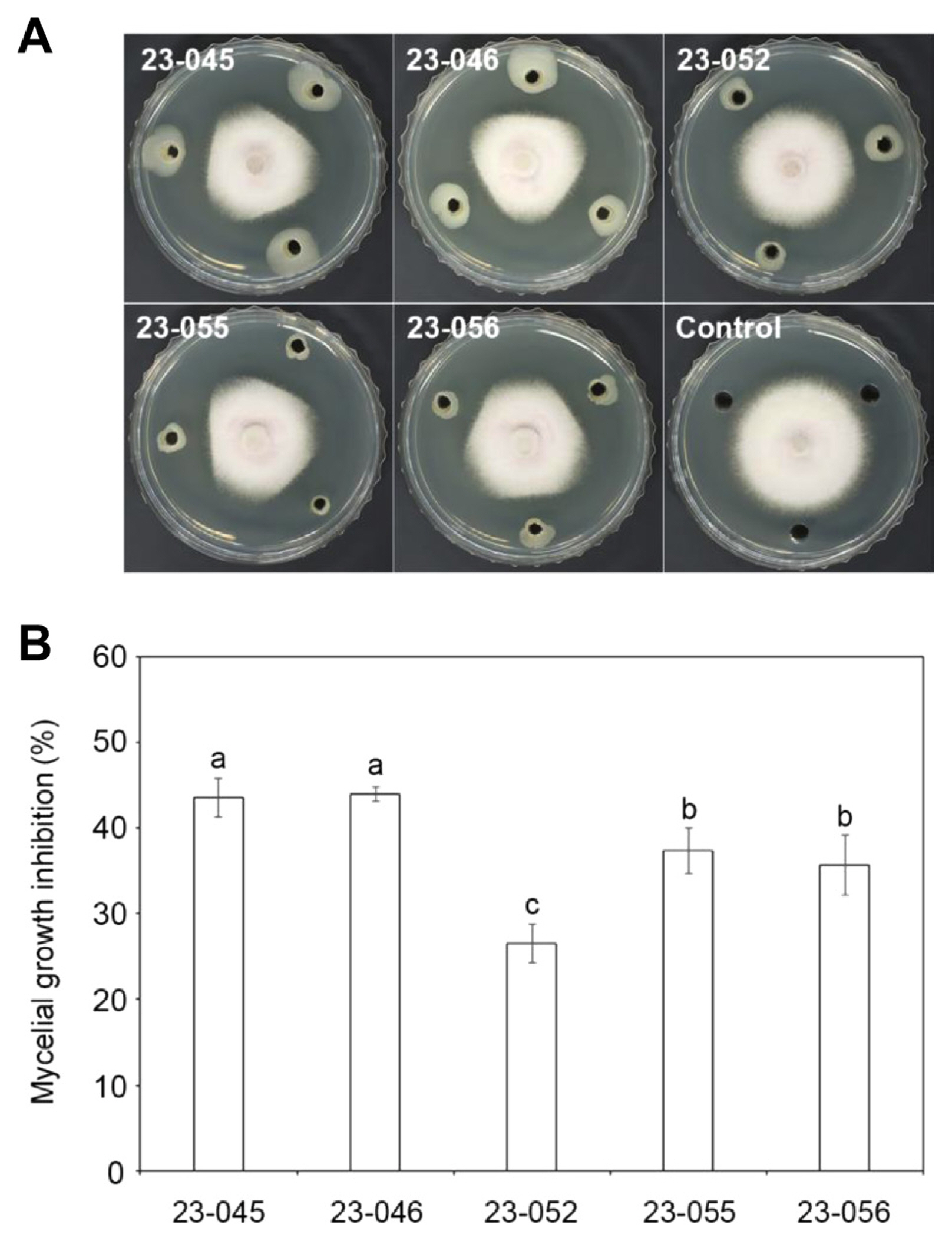

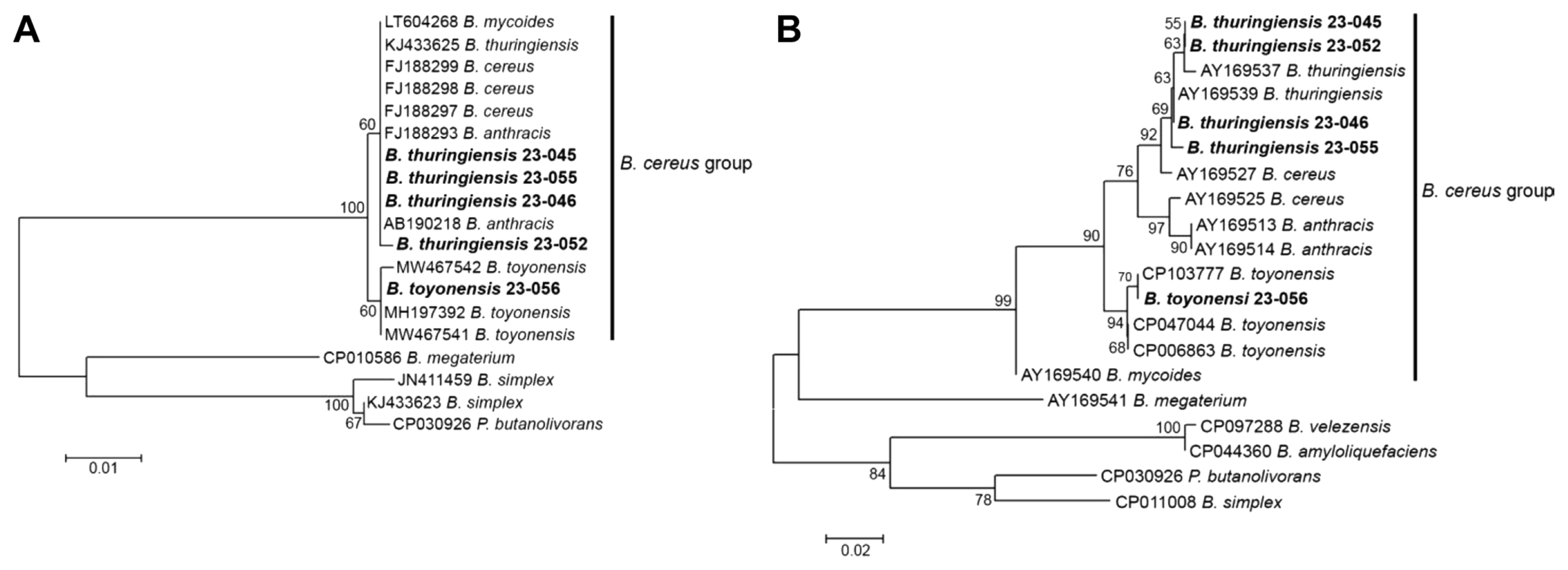

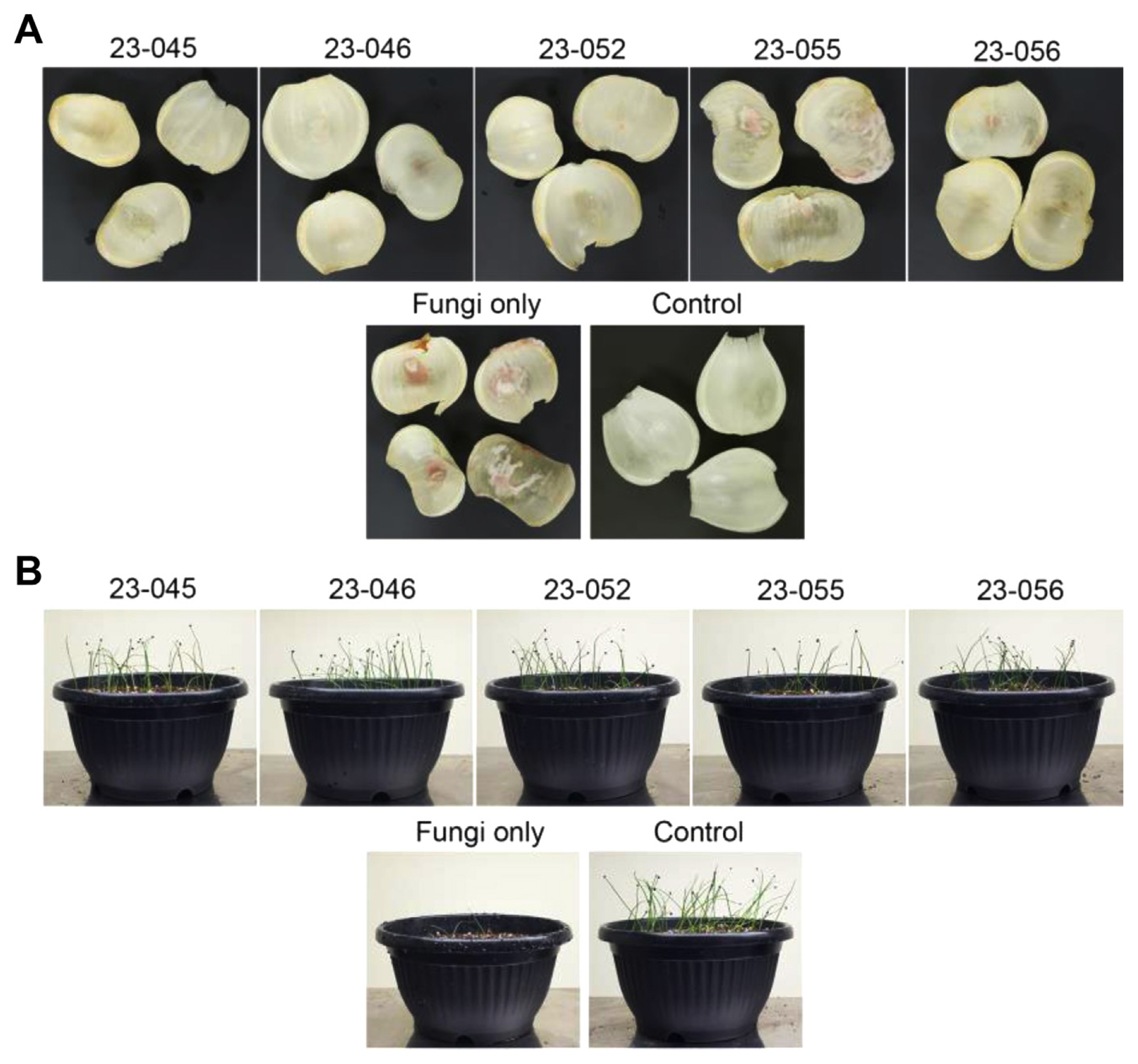
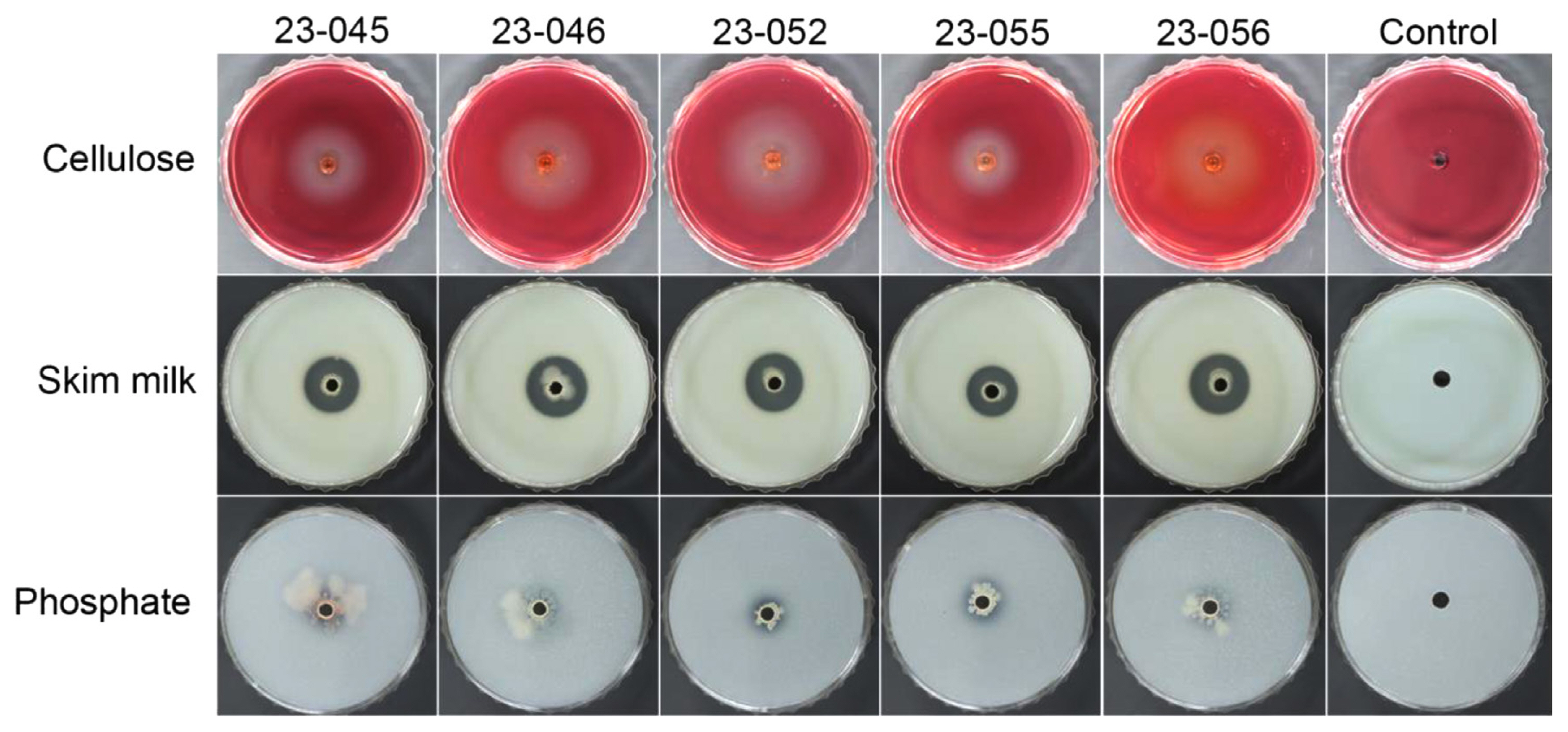
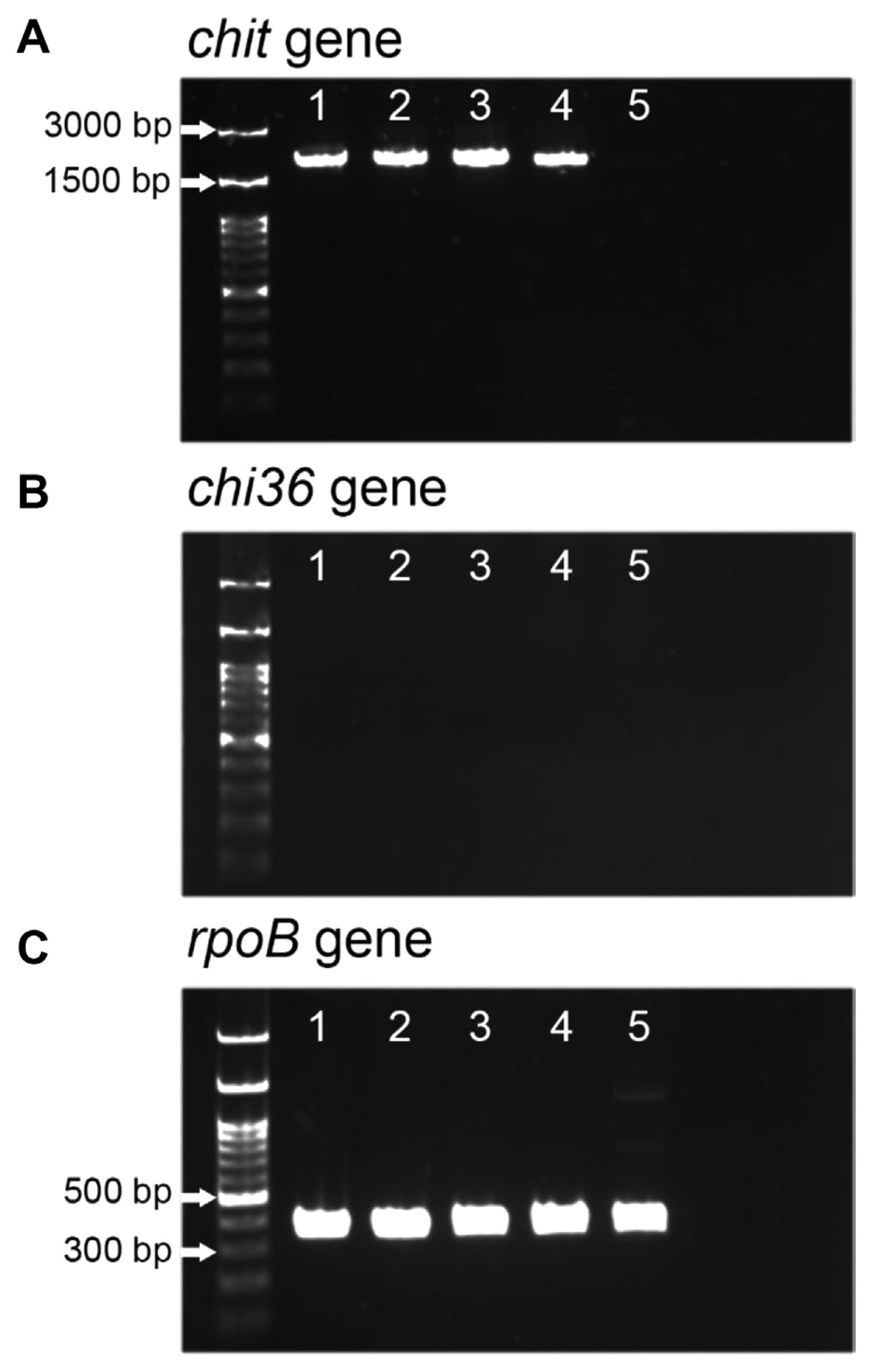








 PDF Links
PDF Links PubReader
PubReader ePub Link
ePub Link Full text via DOI
Full text via DOI Full text via PMC
Full text via PMC Download Citation
Download Citation Print
Print



